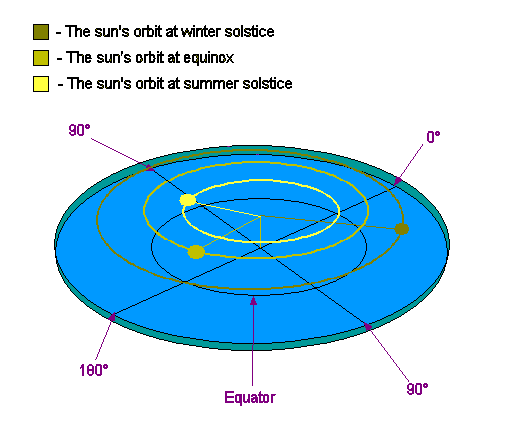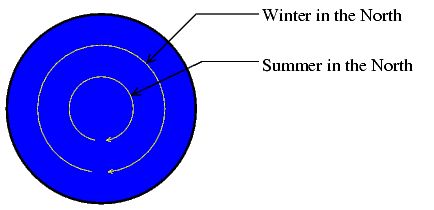Difference between revisions of "Flat Earth - Frequently Asked Questions"
| Line 12: | Line 12: | ||
Many other experiments demonstrating the lack of curvature in the Earth may be found in [[Earth Not a Globe]], by [[Samuel Birley Rowbotham]]. | Many other experiments demonstrating the lack of curvature in the Earth may be found in [[Earth Not a Globe]], by [[Samuel Birley Rowbotham]]. | ||
| + | |||
| + | == How do you explain day and night cycles? == | ||
| + | Day and night cycles are easily explained on a flat-earth. The sun moves in circles around the North Pole. When it is over your head, it's day. When it's not, it's night. The sun acts like a spotlight and shines downward as it moves. The picture below also illustrates how the sun moves and also how seasons work on a flat-earth. <BR /> | ||
| + | [[File:Seasons.png]] | ||
| + | <BR />When the sun is further away from the North Pole, it's winter in the northern hemiplain (or hemisphere) and summer in the south. A more simplistic picture can be found below. | ||
| + | <BR />[[File:FlatEarthErasmus.png]] | ||
Revision as of 22:14, 29 December 2012
Welcome to the Flat Earth Society, and thank you for taking the time to go through this FAQ. It was created in light of the realization that for someone with a "Round-Earth" (RE) background, the FE theory would appear at first glance to have some glaring holes. This thread is designed to answer some of the questions that many Round Earthers raise when they first arrive. Please check this page before making your first threads, as it may contain the answers to the questions on your mind.
This FAQ contains multiple answers for some questions, simply because there are differing views of Flat Earth Theory among some of our members.
Is this site a joke?
This site is not a joke. We are actively promoting the Flat Earth movement worldwide. There are, admittedly, several non-serious Flat Earth posters, but they are fairly easy to identify.
What evidence do you have?
The evidence for a flat earth is derived from many different facets of science and philosophy. The simplest is by relying on ones own senses to discern the true nature of the world around us. The world looks flat, the bottoms of clouds are flat, the movement of the sun; these are all examples of your senses telling you that we do not live on a spherical heliocentric world. This is using what's called an empiricistic approach, or an approach that relies on information from your senses. Alternatively, when using Descartes' method of Cartesian doubt to skeptically view the world around us, one quickly finds that the notion of a spherical world is the theory which has the burden of proof and not Flat Earth Theory.
Perhaps the best example of Flat Earth proof is the Bedford Level Experiment. In short, this was an experiment preformed countless times on a six-mile stretch of water that proved the surface of the water to be flat. It did not conform to the curvature of the earth that round-earth proponents teach.
Many other experiments demonstrating the lack of curvature in the Earth may be found in Earth Not a Globe, by Samuel Birley Rowbotham.
How do you explain day and night cycles?
Day and night cycles are easily explained on a flat-earth. The sun moves in circles around the North Pole. When it is over your head, it's day. When it's not, it's night. The sun acts like a spotlight and shines downward as it moves. The picture below also illustrates how the sun moves and also how seasons work on a flat-earth.

When the sun is further away from the North Pole, it's winter in the northern hemiplain (or hemisphere) and summer in the south. A more simplistic picture can be found below.

